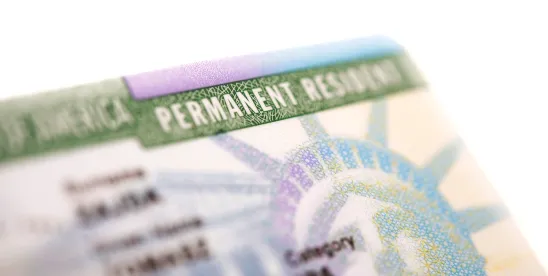In this week’s episode, BAL’s Kristi Ngo explains why the EB-5 visa is a viable alternative to the traditional PERM green card path for certain foreign national investors. Plus, the latest U.S. and global immigration news.
Transcript
Episode 87 – EB-5 Visa: The PERM alternative for investors
This episode of the BAL Immigration Report is brought to you by BAL, the corporate immigration law firm that powers human achievement through immigration expertise, people-centered client services and innovative technology. Learn more at BAL.com.
In this week’s episode, BAL’s Kristi Ngo [PRONOUNCED “NO”] explains why the EB-5 visa is a viable alternative to the traditional PERM green card path for certain foreign national investors. Plus, the latest U.S. and global immigration news.
From Dallas, Texas, I’m Rebecca Sanabria.
Spotlight
Since its initial launch by the U.S. Department of Labor in 2005, Program Electronic Review Management Labor Certification, commonly referred to as PERM, has become an increasingly complicated and lengthy process as an employment-based path to a green card.
However, there are alternative options for certain foreign nationals seeking lawful permanent residency. The EB-5 visa is one of them.
The EB-5 Immigrant Investor Program was created by Congress in 1990 to stimulate the U.S. economy through job creation and capital investment by foreign investors. Investors may also qualify for EB-5 classification by investing through officially designated regional centers.
Kristi Ngo, a BAL associate attorney in the Los Angeles office and frequent contributor to EB-5 Investors Magazine, joined the BAL Immigration Report to discuss what makes the EB-5 visa a great alternative to PERM and other program fundamentals.
Ngo: The EB-5 visa can be a great option in comparison to all the other green card options. Now, Diversity Lottery is pure luck, and the foreign national may not have any U.S. immediate relative or a U.S.-based employment. For some that do, like Indian nationals, EB-5 can be a much shorter route to the green card than, say, PERM EB-2 and EB-3 categories, where they were probably waiting more than 10 years.
The EB-5 visa is a green card option for foreign nationals which is based on U.S. investment instead of U.S. employment or familial ties. EB-5 requires an investment of $800,000 or $1.05 million into a U.S. business that goes on to create at least 10 jobs for U.S. workers.
The requisite investment amount does depend on the location of the project or the type of project, and investment into a U.S. business in a rural area or an area with high unemployment or an infrastructure project does qualify for the lower investment amount of $800,000. The investor must also show that the investment funds derive from a lawful source.
The EB-5 program is a three-step process. The first step is called the I-526. It’s the petition to create the basis for the green card. The I-526 is where you show the project and the source of funds. That can take anywhere from one/one-and-a-half to four years — although, in my experience, it leans towards the shorter end of the processing times.
The second step is consular processing or filing for adjustment of status. You file for adjustment of status, which is through Form I-485, if the foreign national is currently in the U.S. at the time of filing. Otherwise, they will apply for the U.S. immigrant visa through the U.S. consulate abroad. Those processing times differ depending on what form the investor is taking to get their green card. The investor will initially receive a two-year conditional green card before that conditional green card expires.
They will have to file another petition called the I-829 to prove that they have sustained the investment and the project did indeed create the requisite amount of jobs. Now the I-829 can take two to five years.
In fiscal year 2023, a total of 8,506 EB-5 visas were issued via consular processing, marking a substantial increase of 23.6% compared to fiscal year 2022.* Ngo listed the top investor countries and discussed reforms that helped with increasing foreign investment and decreasing fraud.
Ngo: The top countries to apply for EB-5 are China, India and Vietnam. India and China now take up the majority of EB-5 visa applications, though China by far has the most number of petitions. Vietnam used to have a backlog, a visa backlog, which they have now come out of.
The Reform and Integrity Act, which was enacted in 2022, made major changes to the EB-5 program. One of the major changes at the time was it gave a five-year length of the regional center program. Previously, the regional center program was tied with the annual federal budget, which oftentimes gets just pushed down and pushed back by months at a time, so a lot of EB-5 practitioners and investors never knew when the program was going to end and would rush to file an EB-5 petition before the regional center programs was no longer available. The five-year length gave practitioners and investors that certainty of how long the program could last.
Additionally, the RIA made it available for investors to file for adjustment of status through the I-485 at the same time as their initial I-526 petition. Previously, they could only file for adjustment of status after the I-526 has already been approved, so this would speed up the green card process by years.
The RIA also enacted sanctions and protective measures against bad acting regional centers.
One of the major controversies regarding EB-5 is whether there’s fraud. That is something that investors have asked me about, or especially if they do Googling about the EB-5 program, it’s a concern of “Is there fraud?” And that’s where the investor has to do their own due diligence when deciding what project they want to invest in for the EB-5 visa.
Now, if the investor is doing a direct investment, fraud is not as much of a concern because they are the one running and operating their EB-5 business.
When they choose to make an investment, it can be a direct project run by someone they know, or it could be a regional center project in which it’s a passive investment into a business entity that pools EB-5 capital that oftentimes is run by someone they don’t know, someone that they have just found online or through word of mouth.
It is extremely important for the investor to vet, what is the project? How long have the project owners and participants been involved in the EB-5 program? How long have they been involved with commercial real estate? What’s the job cushion of the project? Who are the people involved with this project? How much money? How much capital is the regional center putting into this project? So they can have skin in the game. Those are the things that investors need to look at to make sure that this is a project that will not only result in the green card later on, but also the return of capital when they have completed the EB-5 process.
U.S. Citizenship and Immigration Services announced an overall reduction in processing times — including EB-5 investor forms — in the first six months of the 2024 fiscal year compared to the previous fiscal year. Learn more about EB-5 visas at BAL.com.
Top immigration news
And now, the top U.S. and global immigration news.
This week, Department of Homeland Security announced implementation of the Keeping Families Together process, which grants parole in place on a case-by-case basis to certain noncitizen spouses and stepchildren of U.S. citizens.
DHS estimates that 500,000 noncitizen spouses and 50,000 noncitizen stepchildren of U.S. citizens may meet these eligibility criteria.
If granted parole, these noncitizen spouses and noncitizen stepchildren of U.S. citizens, if otherwise eligible, could apply for lawful permanent residence without leaving the country.
Applicants can find more information at uscis.gov.
In global news, Indian authorities announced an expansion of the visa-on-arrival policy to include foreign nationals from Japan, South Korea and the United Arab Emirates.
In Canada, the government unveiled the Francophone Minority Communities Student Pilot program to support the growth of French-speaking communities outside Quebec.
The initiative aims to improve access to Canadian post-secondary institutions for French-speaking students from Africa, the Middle East and the Americas.
We’ll be back next week with more insights from the world of corporate immigration.
I’m Rebecca Sanabria. Thanks for listening.




 />i
/>i
